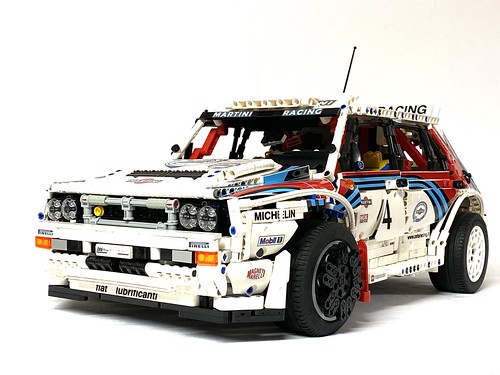
It’s the early-’80s, and British Leyland has a new small (and surprisingly good) car on its hands. The Metro, first sold as an Austin and later a Rover, rapidly became a best seller, with over 130,000 sold in 1983 in the UK alone. Aiming to capitalise on this success British Leyland decided to take the Metro racing, and the pinnacle of motorsport in the mid-’80s was rallying’s monstrous ‘Group B’.
Bearing a physical resemblance (but little else) to road-going cars, Group B racers featured tubular-steel space-frames, mid-mounted engines, and trick all-wheel-drive systems, and the Metro got the lot.
Developed by Williams Engineering, the Metro 6R4 gained a mid-mounted naturally-aspirated V6 engine, loosely developed from the all-conquering Cosworth DVF Formula 1 unit, a glassfibre body, and MG badges – to better align it with the hot-hatch versions of the road-going Metro. For homologation purposes customers could actually buy a road-going 6R4 too, which must’ve been a wild thing to take to the shops.
The new Metro 6R4 rally car debuted at the end of 1985, taking a podium at its first event. However, by just the middle of the following year, it was all over.
After a series of fatal accidents, Group B was banned mid-season, and the 6R4 – along with rest of the Group B field – was orphaned. Without a global series in which to race, Rover sold the cars on, but their motorsport life wasn’t over. Rallycross and British rallying became the 6R4’s new home, and in the hands of privateers the cars became formidable opponents, winning so frequently the rules had to be tightened to restrict them.
The 6R4’s V6 engine also went on to a rather interesting new life… but you can read about that another time.
Thus, despite such a short life in world rallying, the Metro 6R4 remains one of the most iconic and fearsome cars ever borne out of Group B, and previous bloggee Samolot has paid homage to the unlikely rally star with his incredible Technic replica.
Under a one-piece removable body Samolot’s 6R4 features a mid-mounted V6 engine, all-wheel-suspension, and a remote controlled all-wheel-drive system with working steering courtesy of LEGO’s Power Functions motors. Custom decals recreate the ’80s works livery, there are opening doors, bonnet and hatch-back, and there’s more of the model to see – including photos of the trick all-wheel-drive chassis – at the Eurobricks forum.
Click the link above to take a look at the maddest Metro ever built.

Like this:
Like Loading...




































